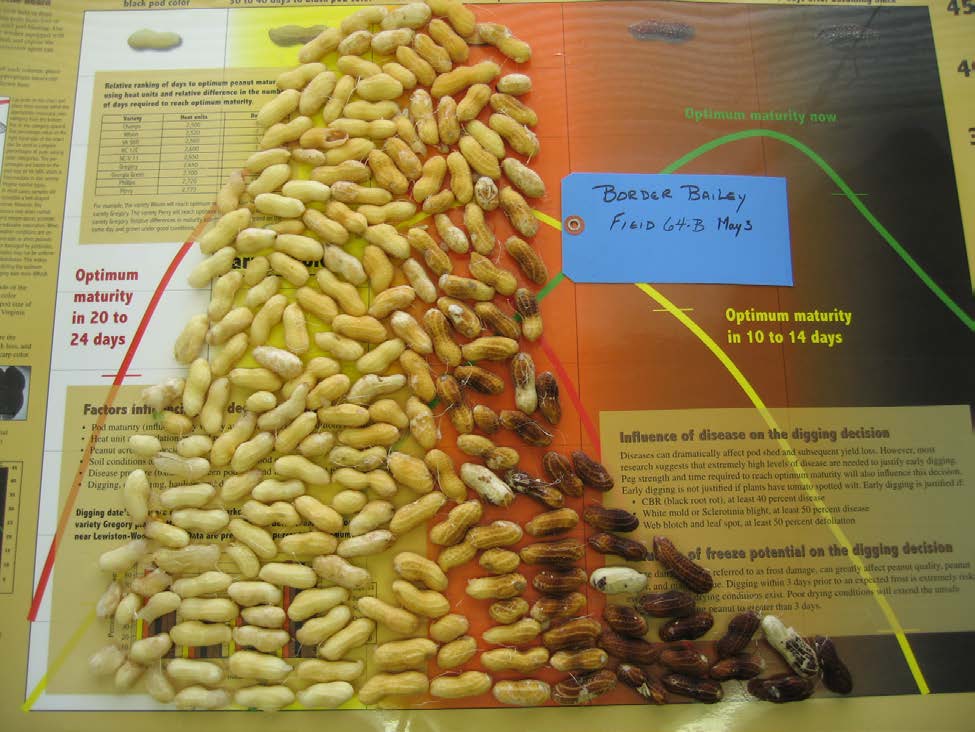Pod Maturity in 2013 From Virginia Tech Courtesy of Dr. Balota
go.ncsu.edu/readext?324859
en Español / em Português
El inglés es el idioma de control de esta página. En la medida en que haya algún conflicto entre la traducción al inglés y la traducción, el inglés prevalece.
Al hacer clic en el enlace de traducción se activa un servicio de traducción gratuito para convertir la página al español. Al igual que con cualquier traducción por Internet, la conversión no es sensible al contexto y puede que no traduzca el texto en su significado original. NC State Extension no garantiza la exactitud del texto traducido. Por favor, tenga en cuenta que algunas aplicaciones y/o servicios pueden no funcionar como se espera cuando se traducen.
Português
Inglês é o idioma de controle desta página. Na medida que haja algum conflito entre o texto original em Inglês e a tradução, o Inglês prevalece.
Ao clicar no link de tradução, um serviço gratuito de tradução será ativado para converter a página para o Português. Como em qualquer tradução pela internet, a conversão não é sensivel ao contexto e pode não ocorrer a tradução para o significado orginal. O serviço de Extensão da Carolina do Norte (NC State Extension) não garante a exatidão do texto traduzido. Por favor, observe que algumas funções ou serviços podem não funcionar como esperado após a tradução.
English
English is the controlling language of this page. To the extent there is any conflict between the English text and the translation, English controls.
Clicking on the translation link activates a free translation service to convert the page to Spanish. As with any Internet translation, the conversion is not context-sensitive and may not translate the text to its original meaning. NC State Extension does not guarantee the accuracy of the translated text. Please note that some applications and/or services may not function as expected when translated.
Collapse ▲This morning we podblasted several samples from our research farm (those with a field number assigned), and from two farmer’s fields in Southampton County, Mr. Warrell and Porter. We sampled 3 ft in each field and also estimated yield in those fields. Commentaries are included under each picture.

Image 1. This field was planted on May 3 and it probably needs a full month to harvest. Some pods will probably be lost, the brown ones at the right, but the majority of the crop right now seems to be in light yellow and white pods. Estimated yield for this field is 5900 lb/A.

Image 2. This field was planted a week later than the previous and still not much difference in terms of pod color. Estimated yield is 5742 lb/A.

Image 3. Mr. Porter planted on May 12 and his crop looks a little more mature than our research plots; still he is looking at least 2-3 weeks before scouting again. I obtained a yield estimate for his field of 4088 lb/A.

Image 4. Mr. Worrell’s peanuts are not much different than Mr. Porter’s even though they were planted almost 2 weeks earlier.
| 2012 | 2013 | |||||||||
| Month | AVG Tair | Max Tair | Min Tair | AVG Tsoil | Heat Units | AVG Tair | Max Tair | Min Tair | AVG Tsoil | Heat Units |
| May | 70 | 82 | 59 | 72 | 429 | 67 | 78 | 48 | 67 | 355 |
| June | 73 | 86 | 61 | 76 | 941 | 75 | 86 | 66 | 77 | 935 |
| July | 81 | 93 | 72 | 84 | 1715 | 79 | 90 | 70 | 81 | 1642 |
| August | 77 | 88 | 69 | 80 | 2358 | 75 | 86 | 66 | 78 | 2191 |
This year, we are almost 200 heat units behind last year. With the exception of June, all other months until now were cooler than last year. In particular May was cool with much cooler soil and night temperatures than in previous years. Probably this, combined with frequent flooding in some fields, indeed “washed out” the benefit of early May versus late May planting. Then in June, when temperatures of soil and air were warmer in 2013 than 2012, late planted plants could catch up with those planted earlier.
Keep in mind that Bailey needs 2590 heat units to mature and Sugg is at least one week later than Bailey.
I will continue to keep you informed on the peanut maturity progress.
Article first appeared as North Carolina Peanut Note (PNNC-2013-077)



